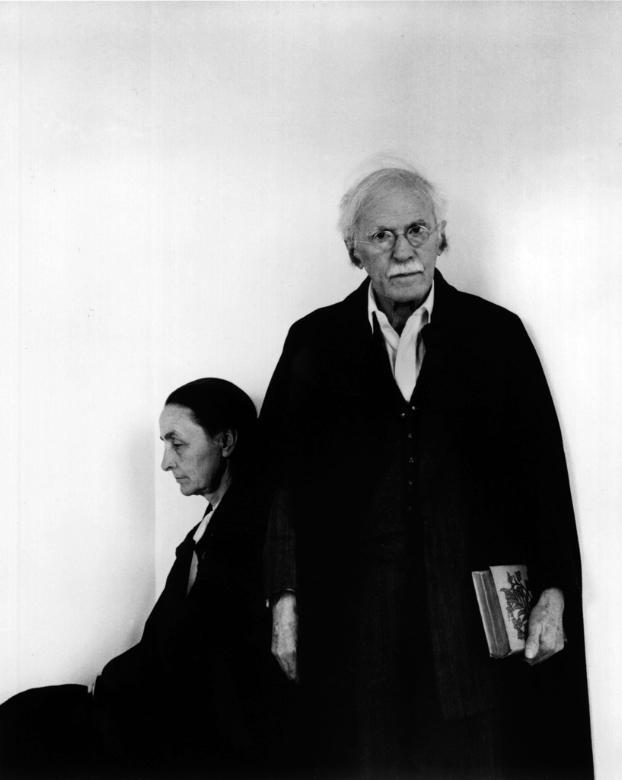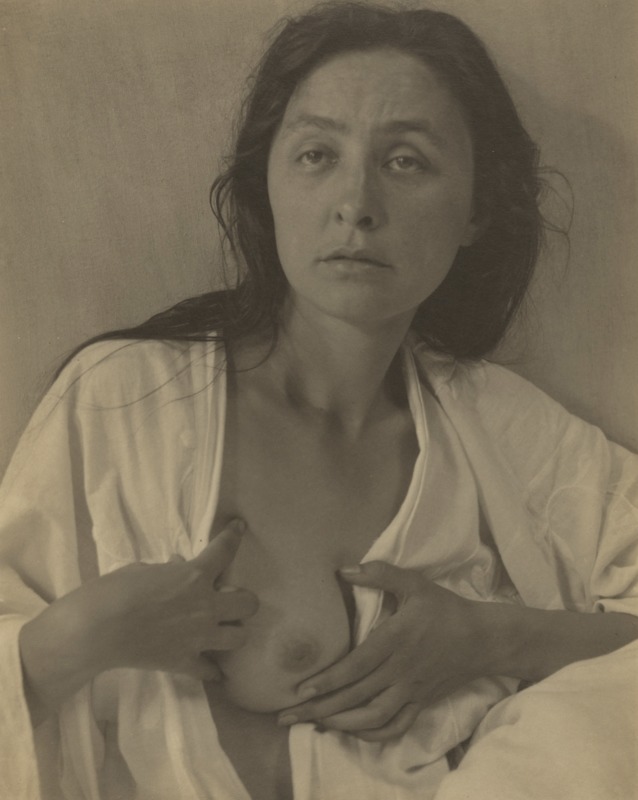O'Keeffe and Stieglitz
Alfred Stieglitz (January 1, 1864 – July 13, 1946) was an American photographer and modern art promoter who was instrumental over his fifty-year career in making photography an accepted art form. In addition to his photography, Stieglitz was known for the New York art galleries that he ran in the early part of the 20th century, where he introduced many avant-garde European artists to the U.S.
In January 1916, Stieglitz was shown a portfolio of charcoal drawings by a young artist named Georgia O'Keeffe. Stieglitz was so taken by her art that without meeting O'Keeffe or even getting her permission to show her works he made plans to exhibit her work at 291. The first that O'Keeffe heard about any of this was from another friend who saw her drawings in the gallery in late May of that year. She finally met Stieglitz after going to 291 and chastising him for showing her work without her permission.
Soon thereafter O'Keeffe met Paul Strand, and for several months she and Strand exchanged increasingly romantic letters. When Strand told his friend Stieglitz about his new yearning, Stieglitz responded by telling Strand about his own infatuation with O'Keeffe. Gradually Strand's interest waned, and Stieglitz's escalated. By the summer of 1917 he and O'Keeffe were writing each other "their most private and complicated thoughts",[24] and it was clear that something very intense was developing.
The year 1917 marked the end of an era in Stieglitz's life and the beginning of another. In part because of changing aesthetics, the changing times brought on by the war and because of his growing relationship with O'Keeffe, he no longer had the interest or the resources to continue what he had been doing for the past decade. Within the period of a few months, he disbanded what was left of the Photo-Secession, ceased publishing Camera Work and closed the doors of 291. It was also clear to him that his marriage to Emmy was over. He had finally found "his twin", and nothing would stand in his way of the relationship he had wanted all of his life.
In early June 1918, O'Keeffe moved to New York from Texas after Stieglitz promised he would provide her with a quiet studio where she could paint. Within a month he took the first of many nude photographs of her at his family's apartment while his wife Emmy was away, but she returned while their session was still in progress. She had suspected something was going on between the two for a while, and told him to stop seeing her or get out. Stieglitz left and immediately found a place in the city where he and O'Keeffe could live together. They slept separately for more than two weeks. By the end of July they were in the same bed together, and by mid-August when they visited Oaklawn "they were like two teenagers in love. Several times a day they would run up the stairs to their bedroom, so eager to make love that they would start taking their clothes off as they ran."
Once he was out of their apartment Emmy had a change of heart. Due to the legal delays caused by Emmy and her brothers, it would be six more years before the divorce was finalized. During this period Stieglitz and O'Keeffe continued to live together, although she would go off on her own from time to time to create art. Stieglitz used their times apart to concentrate on his photography and promotion of modern art.
O'Keeffe was the muse Stieglitz had always wanted. He photographed O'Keeffe obsessively between 1918 and 1925 in what was the most prolific period in his entire life. During this period he produced more than 350 mounted prints of O'Keeffe that portrayed a wide range of her character, moods and beauty. He shot many close-up studies of parts of her body, especially her hands either isolated by themselves or near her face or hair. O'Keeffe biographer Roxanna Robinson states that her "personality was crucial to these photographs; it was this, as much as her body, that Stieglitz was recording."
For the rest of their lives together, their relationship was, "a collusion... a system of deals and trade-offs, tacitly agreed to and carried out, for the most part, without the exchange of a word. Preferring avoidance to confrontation on most issues, O'Keeffe was the principal agent of collusion in their union," according to biographer Benita Eisler. They primarily lived in New York City, but spent their summers at his family home, Oaklawn, in Lake George in upstate New York.
Click to read or edit the full Wikpedia entry:

